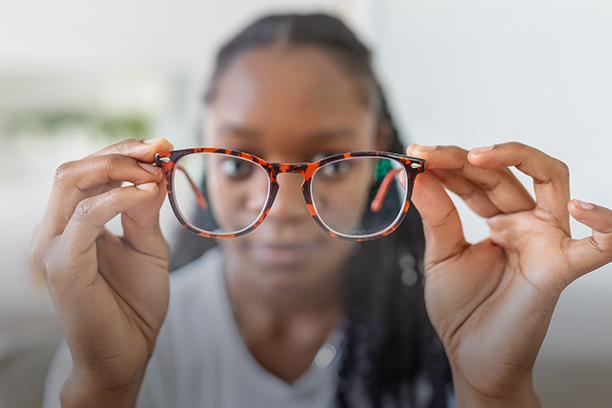- GlassesShop By FrameShop By StyleFeatured












Most people are perfectly aware that eyeglasses are generally used for vision correction, either for long distances or short distances. As people age, there typically emerges a need for reading glasses, which leads to the use of bifocal glasses. These lenses, which are also quite commonly used, correct two different vision problems. But not many are aware that there is also such a thing as trifocal lenses. That is what we are going to talk about today.

As the name suggests, trifocals are lenses that have three prescriptions – one for long distance, one for intermediate distance, and one for close-up distance. The lens is divided into three distinct areas to address these three different vision issues. These divisions are typically visible as two horizontal lines going across the lens.
First of all, we must make it clear that not everyone would need to wear trifocals, even as they age. There are some very lucky people who will have 20/20 vision all the way into their retirement years. Of course, these are just a very lucky few.
There are a lot of people who develop myopia or hyperopia even at a young age. For these conditions alone, regular prescription glasses would suffice. However, with the lifestyle that people have these days, what with looking at the computer several hours a day, there is also the need to clarify intermediate vision. Because of this, many people switch from their regular prescription glasses to a special pair that they use mainly for computer work.
Now, as these people enter their mid-40s, there will be another vision problem that will slowly become apparent. Presbyopia, typically manifested as the difficulty in reading small texts, is a very common part of the aging process. Instead of having a third pair of prescription glasses to add to the mix, a lot of people find that it makes more sense to just switch to trifocal lenses.
Trifocal lenses are not the only solution for addressing three separate vision problems. As mentioned, there is the option of switching between three separate pairs of glasses, depending on what you are looking at. There is also the possibility of wearing trifocal contacts, or switching between different pairs of contacts.
With trifocal lenses, you will only need to wear one pair of glasses, and there are many reasons why this is an advantage. For starters, it is much more convenient than switching from one pair to another. Even if you think it’s not a big deal, it can get tiring if you have to do it multiple times a day. Besides, having to carry three pairs of glasses with you wherever you go can increase the risk of any one of them getting broken or lost.
There is also the matter of cost. Glasses do not have to be expensive – believe it or not, there are plenty of high quality ones that you buy at less than $10 here at EFE. But still, three pairs means three times the price of just one so with trifocals, you are essentially getting three pairs of eyeglasses for the price of one.
As for the disadvantages, the one that is probably most immediately noticeable for a new trifocals user is that the adjustment process can be quite difficult. It will definitely take some time to get used to trifocal lenses. In the beginning, you might find yourself frequently looking through the wrong area of the lens.
For instance, you might look at the computer through the part of the lens for a long distance, or you might try to read a text message on your phone through the part for intermediate vision. These mistakes can make your vision distorted, and they can even cause headaches or eye strain. Furthermore, if you are walking down the steps or on an uneven surface and you look down through the lower part of your trifocal lenses, it can make you lose balance or even lead to a fall.
Earlier, we have mentioned that trifocal lenses typically have horizontal lines that divide between the different prescriptions. In addition to being quite unsightly, these lines can cause image jumps, which can be a distraction. You can do away with these lines by opting for progressive lenses which definitely have the advantage in aesthetics. However, progressive lenses are usually a lot more expensive, and are not necessarily better for every individual.
More articles about lenses:
Single vision lenses – everything you need to know
Are Transition Lenses worth it?
Everything about anti-fatigue lenses: are they worth it?
Everything about polycarbonate lenses: are they worth it?
Everything about high index lenses: are they worth it?
Types of eyeglasses lenses explained: pros and cons
Anti-fog lenses for your glasses

